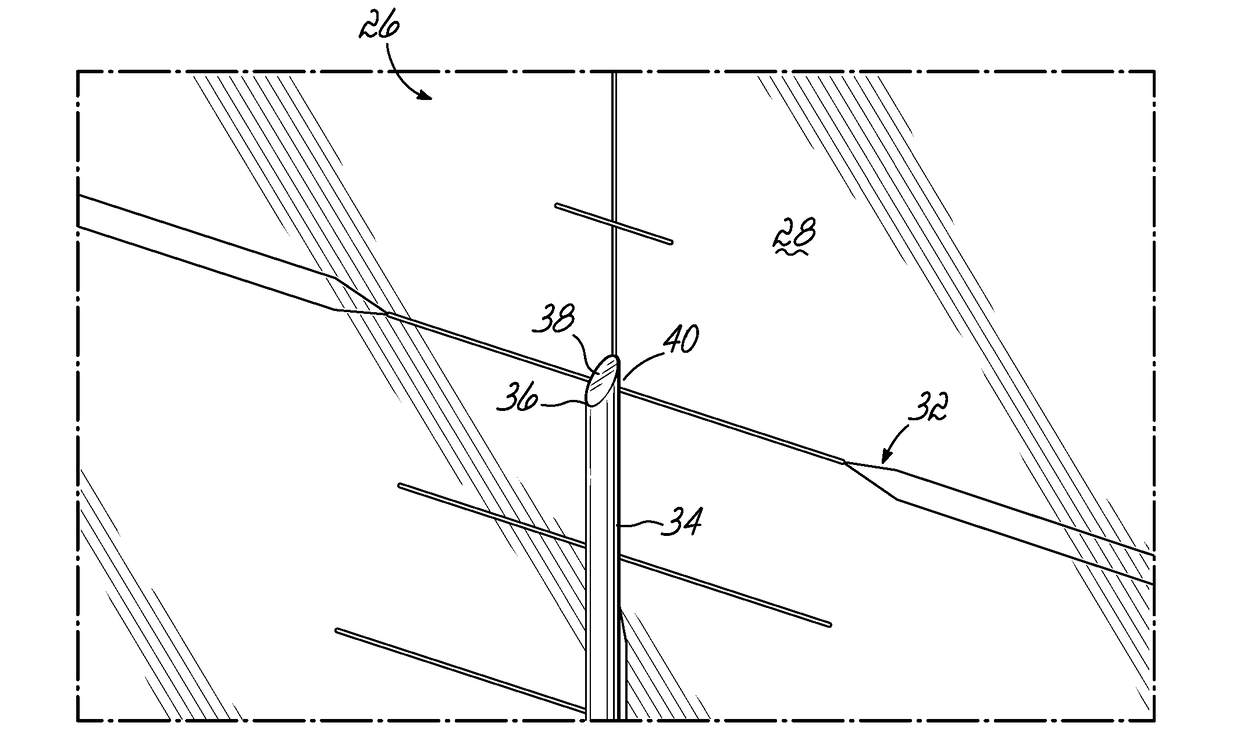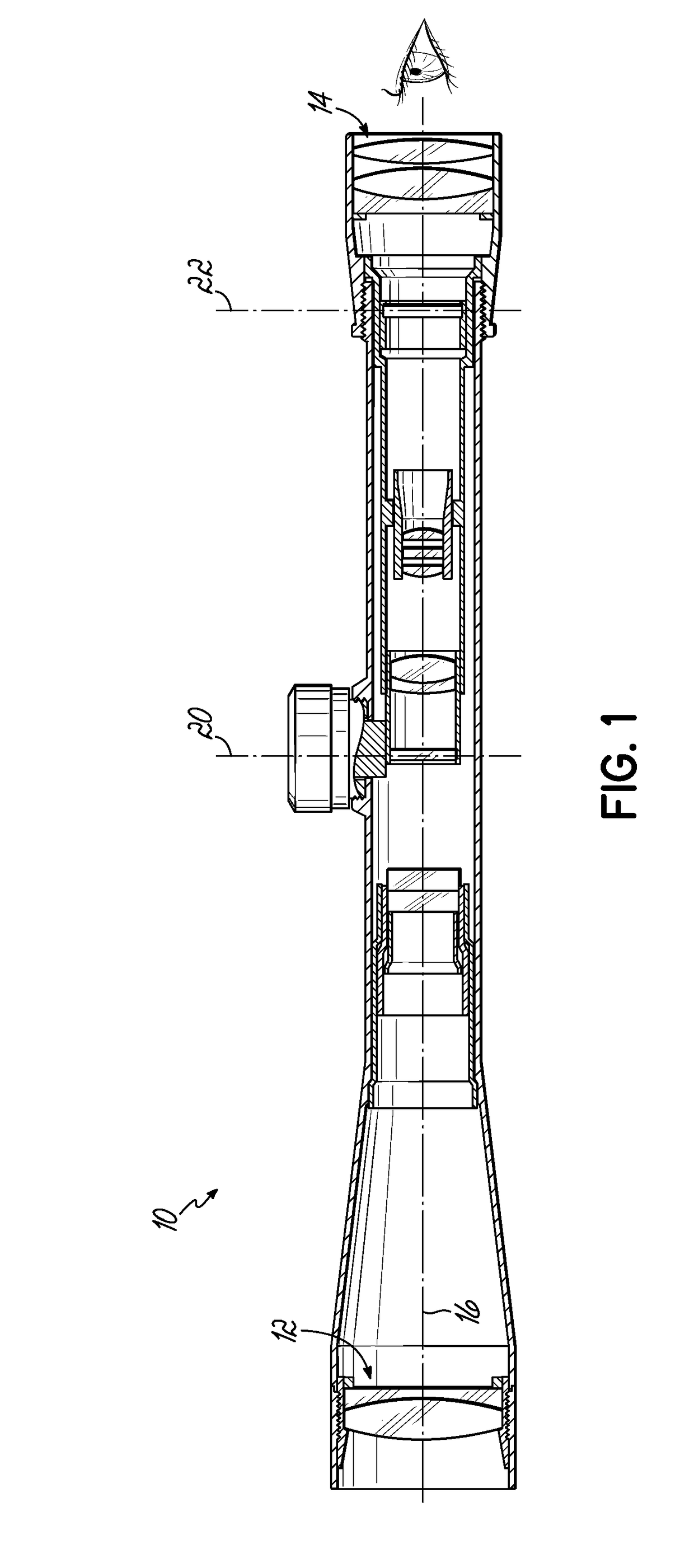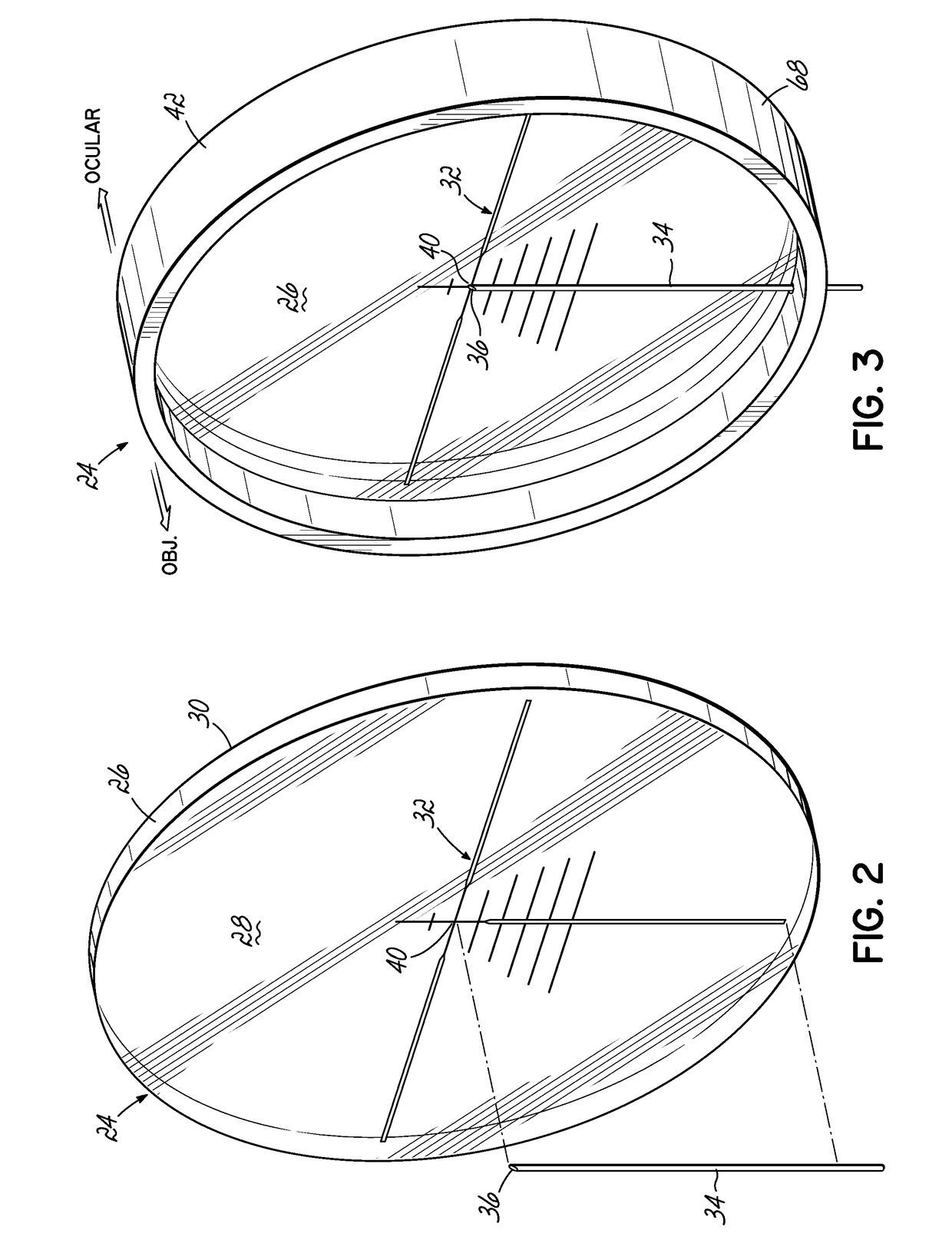Reticle disc with fiber illuminated aiming dot
a technology of illumination and focusing dot, which is applied in the field of illumination focusing dot, can solve the problems of only being used in the second focal plane, the form of illumination may not provide adequate intensity for good contrast, and the reticle can be very detailed and complex, and achieves the effect of high intensity and higher magnification power
- Summary
- Abstract
- Description
- Claims
- Application Information
AI Technical Summary
Benefits of technology
Problems solved by technology
Method used
Image
Examples
first embodiment
[0035]Referring now to FIGS. 2-5, in a first embodiment, a reticle disc assembly 24 is provided for an optical weapon sighting device, such as a riflescope 10. The assembly 24 includes a disc 26, typically made of high quality glass providing clarity and a high level of light transmission. The disc 26 has two substantially flat faces, an objective face 28 and an ocular face 30. When installed in a rifle scope, the objective face 28 is oriented forwardly toward the objective lens 12 and the ocular face 30 is oriented toward the ocular lens 14 and users eye (illustrated schematically in FIG. 1). A reticle pattern 32 may be applied to the disc 26, typically on the objective face 28, by etching, engraving, chromium deposit, or any other well-known means. The reticle pattern 32 may be a simple crosshair pattern, a highly detailed and complex pattern or grid providing ranging and bullet drop compensation markings, or may be any number of variants of intermediate complexity. The reticle pa...
second embodiment
[0041]Referring now to FIGS. 9-13, therein is shown a second embodiment reticle disc assembly 54, which can include a reticle disc 56 having a reticle pattern 32 on its objective face (as described above), an optical fiber 34, a spacer 58, a cover disc 60, and a frame 42. In this embodiment, the fiber 34 is illustrated extending from the top periphery of the assembly 54 along a top portion of a primary stadia line of the reticle pattern 32, although any desired orientation can be used. The fiber 34 may be secured to the reticle disc 56 as described above. As shown in FIGS. 11-13, the optical fiber 34 is “sandwiched” between the reticle disc 56 and cover disc 58. A spacer means 58 can be a unitary structure that extends substantially all the way around the periphery of the reticle disc 56 (as shown), or it may be a plurality of intermittent structures. Generally, the spacer 58 could be equal to or only very slightly greater in thickness than the thickness of the optical fiber 34. The...
third embodiment
[0042]A third embodiment reticle disc assembly 64 is shown in FIGS. 14 and 15. This embodiment includes a length of optical fiber 34, as described above, that is adhered to a wire or electroformed foil reticle 66, the combination of which is adhered to a reticle disc 68 having a reticle pattern 32 etched, engraved, or otherwise applied thereto. The optical fiber 34 can be adhered to one leg of the wire reticle 66 and the fiber 34 will be hidden along most of its length by the wire, as is known in the art. Different from known construction, however, the optical fiber 34 and wire reticle 66 can both be adhered directly to the reticle disc 68 so that all are aligned in the same focal plane 20, 22. When so assembled, the novel combination allows more complex reticle designs 32, including floating features, as well as the support of the wire reticle 66 for the optical fiber 34. By adhering them together, the reticle parts cannot become out of alignment. Additionally, also different from ...
PUM
 Login to View More
Login to View More Abstract
Description
Claims
Application Information
 Login to View More
Login to View More - R&D
- Intellectual Property
- Life Sciences
- Materials
- Tech Scout
- Unparalleled Data Quality
- Higher Quality Content
- 60% Fewer Hallucinations
Browse by: Latest US Patents, China's latest patents, Technical Efficacy Thesaurus, Application Domain, Technology Topic, Popular Technical Reports.
© 2025 PatSnap. All rights reserved.Legal|Privacy policy|Modern Slavery Act Transparency Statement|Sitemap|About US| Contact US: help@patsnap.com



